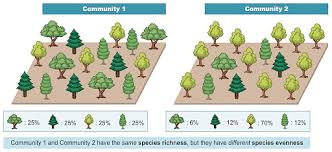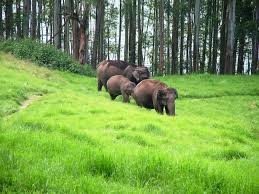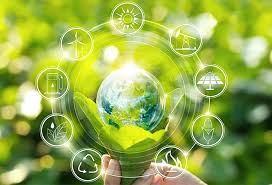Bio-geochemical cycles
Bio-geochemical cycles describe the movement and transformation of elements and compounds through biological, geological, and chemical processes in ecosystems. These cycles ensure the recycling of essential nutrients, maintaining ecosystem health and function. Here’s a detailed analysis of the major bio-geochemical cycles:
1. Carbon Cycle
1.1.Processes:
- Photosynthesis: Plants and algae convert carbon dioxide (CO₂) from the atmosphere into organic compounds (e.g., glucose) using sunlight.
- Respiration: Organisms (plants, animals, microbes) release CO₂ back into the atmosphere as they metabolize organic matter for energy.
- Decomposition: Decomposers break down dead organisms and waste, releasing CO₂ into the soil and atmosphere.
- Combustion: Burning fossil fuels and biomass releases CO₂ into the atmosphere.
- Carbon Sequestration: Carbon is stored in long-term reservoirs, such as forests, soils, and oceans.
1.2.Human Impact:
- Deforestation: Reduces carbon sequestration by destroying forests that capture CO₂.
- Fossil Fuels: Increased combustion of fossil fuels releases excess CO₂, contributing to climate change.
2. Nitrogen Cycle
2.1. Processes:
- Nitrogen Fixation: Atmospheric nitrogen (N₂) is converted into ammonia (NH₃) or related compounds by nitrogen-fixing bacteria in soil or root nodules of legumes.
- Nitrification: Ammonia is oxidized to nitrites (NO₂⁻) and then to nitrates (NO₃⁻) by nitrifying bacteria.
- Assimilation: Plants absorb nitrates from the soil and use them to build proteins and nucleic acids.
- Ammonification: Decomposers convert organic nitrogen (from dead organisms) into ammonia.
- Denitrification: Nitrates are converted back into atmospheric nitrogen by denitrifying bacteria.
2.2.Human Impact:
- Fertilizers: Excessive use of nitrogen fertilizers can lead to nutrient runoff, causing eutrophication in aquatic systems.
- Industrial Activities: Increase in nitrogen oxides (NOx) from burning fossil fuels contributes to air pollution and acid rain.
3. Phosphorus Cycle
3.1.Processes:
- Weathering: Phosphorus is released from rocks into the soil and water through the weathering process.
- Absorption: Plants absorb phosphorus from the soil.
- Consumption: Herbivores obtain phosphorus by consuming plants, and carnivores obtain it by eating herbivores.
- Decomposition: Decomposers break down organic matter, returning phosphorus to the soil.
- Sedimentation: Phosphorus can be deposited into sediments in aquatic systems and become part of the geological cycle.
3.2. Human Impact:
- Fertilizers: Runoff from phosphorus-rich fertilizers can lead to eutrophication in water bodies.
- Land Use: Deforestation and soil erosion can affect phosphorus availability and its cycling in ecosystems.
4. Water Cycle
4.1. Processes:
- Evaporation: Water is converted from liquid to vapor from oceans, lakes, and other water bodies.
- Condensation: Water vapor cools and condenses into clouds.
- Precipitation: Water returns to the surface as rain, snow, or hail.
- Infiltration: Water soaks into the soil and replenishes groundwater supplies.
- Runoff: Water flows over the surface and returns to water bodies like rivers, lakes, and oceans.
4.2. Human Impact:
- Water Pollution: Contaminants from industrial processes, agriculture, and sewage can affect water quality.
- Climate Change: Alters precipitation patterns and impacts water availability and distribution.
5. Sulfur Cycle
5.1.Processes:
- Volcanic Eruptions: Release sulfur dioxide (SO₂) into the atmosphere.
- Oxidation: SO₂ is oxidized to sulfuric acid (H₂SO₄) and returns to the surface as acid rain.
- Assimilation: Plants absorb sulfate (SO₄²⁻) from the soil.
- Decomposition: Decomposers break down organic sulfur compounds, returning sulfur to the soil.
- Reduction: Sulfates are reduced to hydrogen sulfide (H₂S) by sulfate-reducing bacteria in anaerobic conditions.
5.2.Human Impact:
- Industrial Activities: Emissions of sulfur dioxide from burning fossil fuels contribute to acid rain and environmental damage.
- Mining: Releases sulfur compounds and can lead to soil and water contamination.
Practice Questions
- Question:
- Describe the role of nitrogen-fixing bacteria in the nitrogen cycle. How do they contribute to soil fertility?
Answer Outline:
- Nitrogen-fixing bacteria convert atmospheric nitrogen (N₂) into ammonia (NH₃) or related compounds that plants can absorb and use. This process enriches the soil with nitrogen, improving soil fertility and supporting plant growth.
- Question:
- Explain the impact of deforestation on the carbon cycle. How does it affect atmospheric CO₂ levels?
Answer Outline:
- Deforestation reduces the number of trees that absorb CO₂ during photosynthesis, leading to increased atmospheric CO₂ levels. This contributes to climate change by enhancing the greenhouse effect.
- Question:
- How does the phosphorus cycle differ from the nitrogen cycle in terms of its movement and sources?
Answer Outline:
- The phosphorus cycle does not include a gaseous phase like the nitrogen cycle. Phosphorus moves through soil, water, and organisms, primarily from rock weathering and sedimentation. Nitrogen, in contrast, involves atmospheric N₂ and has processes like fixation, nitrification, and denitrification.
- Question:
- Discuss the effects of excessive nitrogen fertilizer use on aquatic ecosystems.
Answer Outline:
- Excessive nitrogen fertilizers can lead to nutrient runoff into aquatic systems, causing eutrophication. This results in algal blooms, decreased oxygen levels, and harm to aquatic life due to hypoxia and changes in species composition.
- Question:
- What is the significance of water infiltration in the water cycle? How does it contribute to groundwater replenishment?
Answer Outline:
- Water infiltration allows water to soak into the soil, replenishing groundwater supplies. This process is crucial for maintaining groundwater levels, supporting plant growth, and providing water for human use and ecosystems.
Understanding these cycles helps reveal how ecosystems function and maintain balance, and how human activities can impact these critical processes.
Also Read




